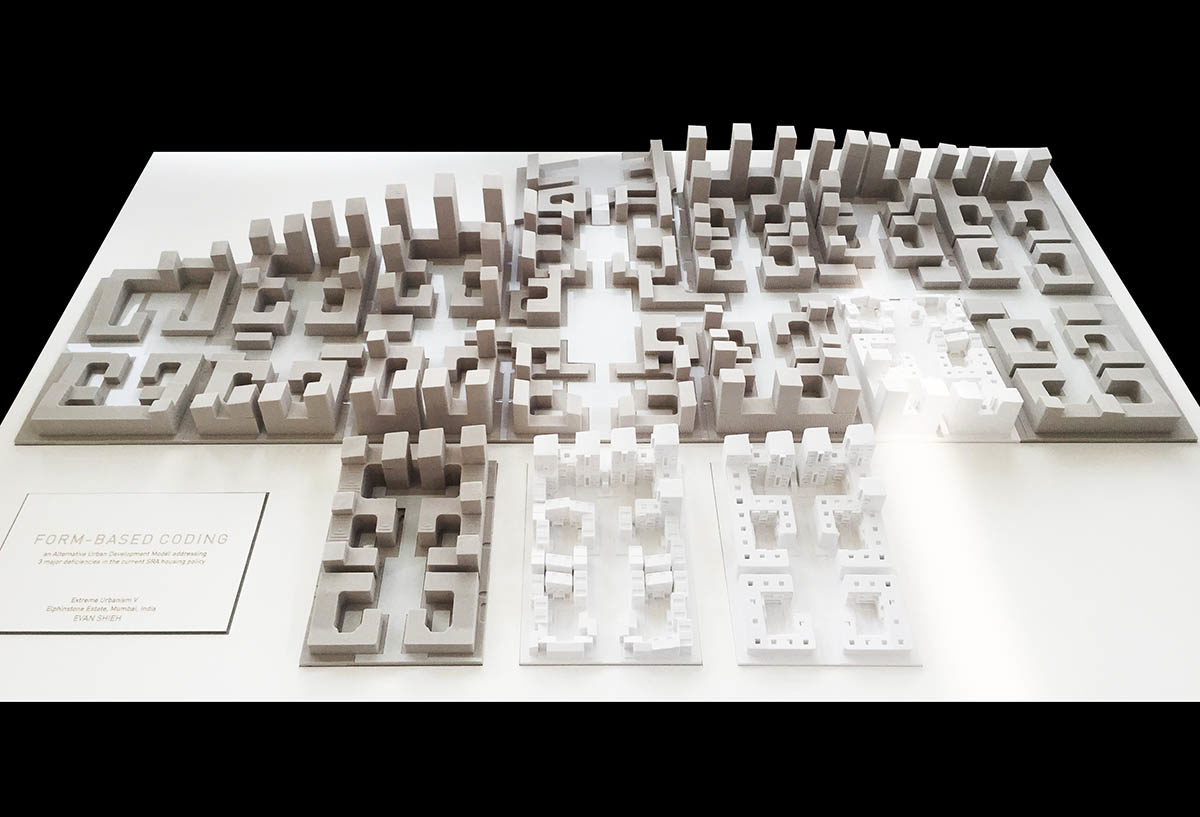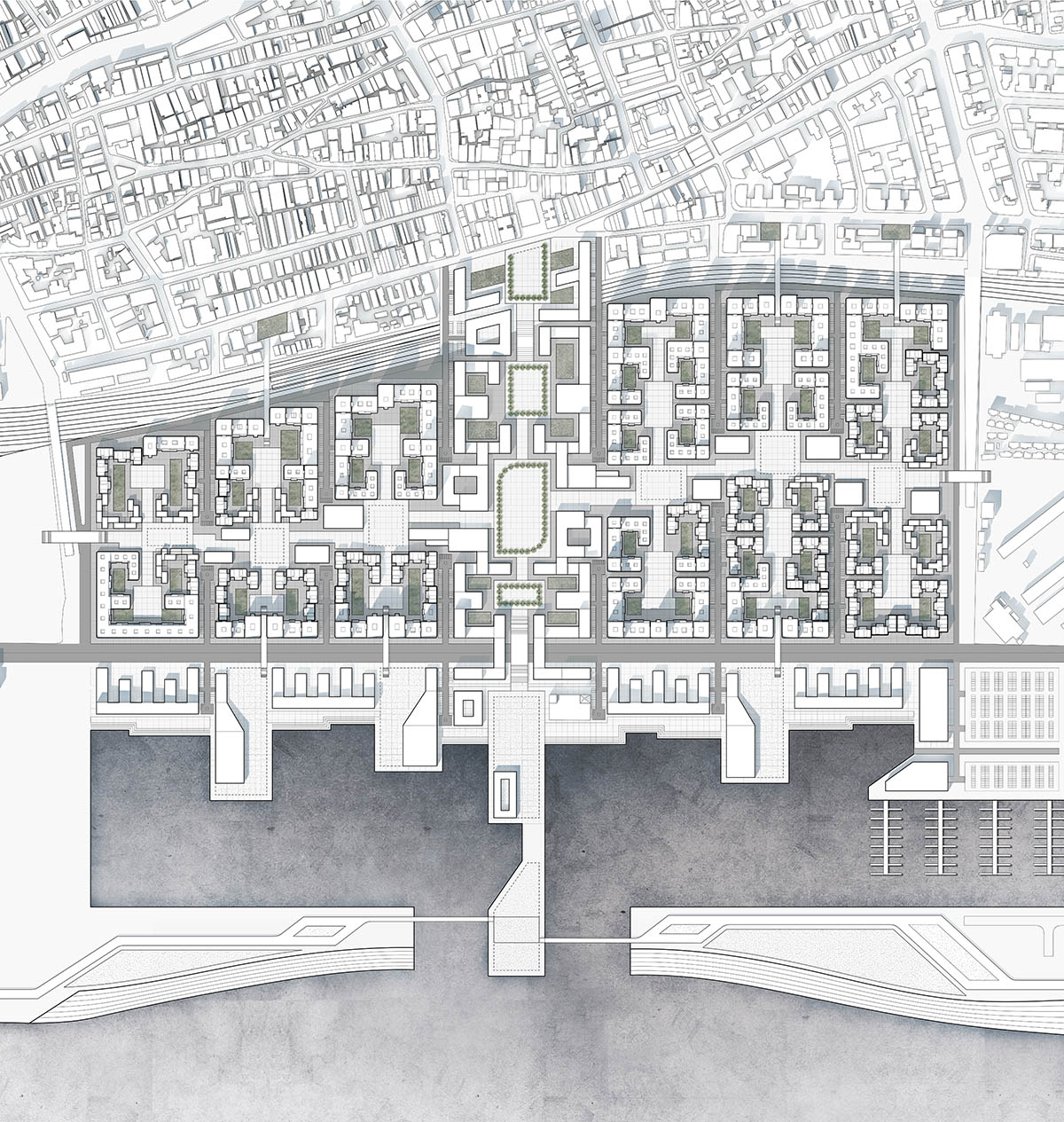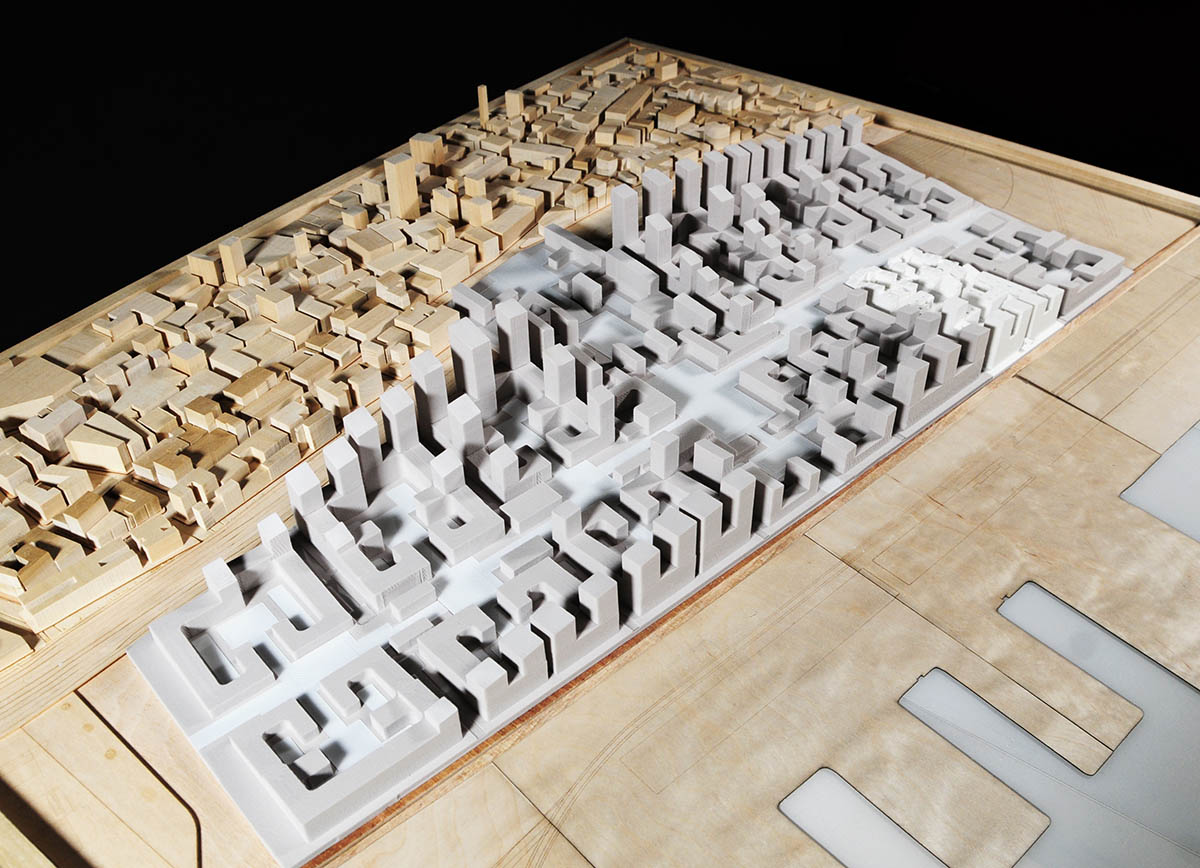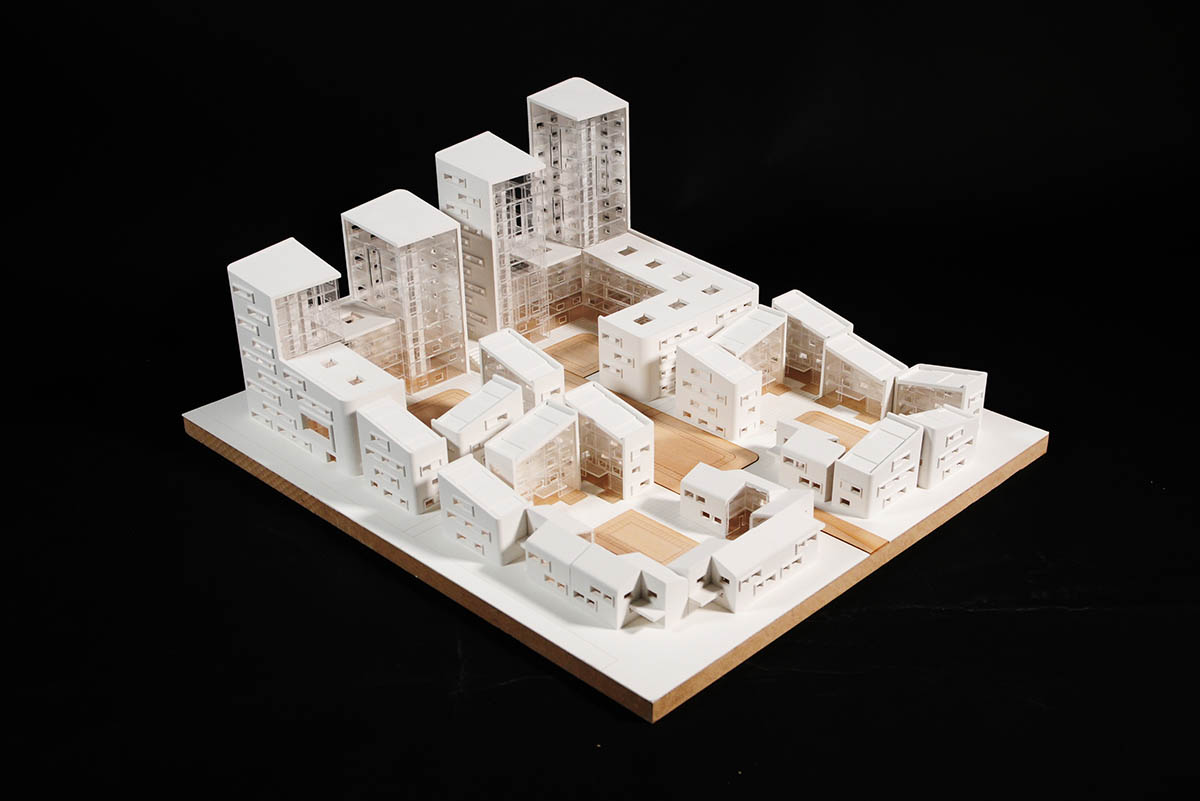Form-Based Coding

by Evan Shieh (MAUD ’19)
The proposed design methodology in this project examines form‐based code as a potential model that has the ability to address these three deficits. It proposes an alternative urban development model that fulfills the FSI density requirements that high‐value land like our project site demands, yet still provide a humane housing model that maintains access to a scaled set of open spaces, amenities & guardian institutions, and allows for a diversity of building typologies, densities, and aggregations to encourage flexibility in lifestyles. By dictating the larger form‐based coding of the block configurations, the model allows for a multitude of potential housing lifestyles & architectural aesthetic scenarios to take place within this maximum buildable zoning envelope, while a rigorous urban relationship to a scalar subdivided set of open spaces (from the neighbor to the entire district) is strictly maintained. In doing so, a gradient of building typologies, from the tower to the single‐family home, can successfully coexist on the same parcel of land, while dually ensuring that a wide range of unit sizes can accommodate household incomes of all ranges.
Fundamentally, the project shows how alternative models do exist and can be both financial performative and also urbanistic‐ly humane, without resorting to the severe cluster developments that the SRA schemes default to. In doing so, it both critiques the current SRA housing policy but also offers a new model of urban housing development for a city of such dire affordable housing needs.


